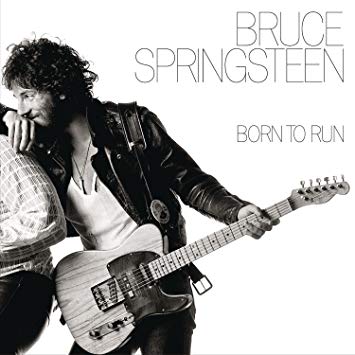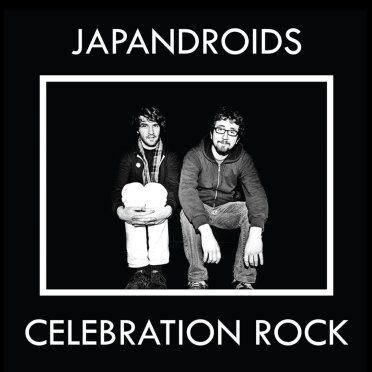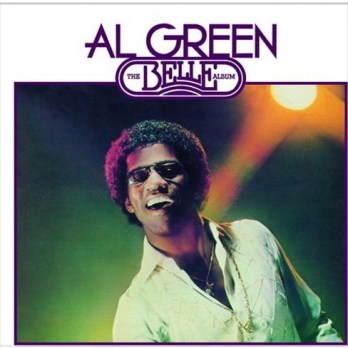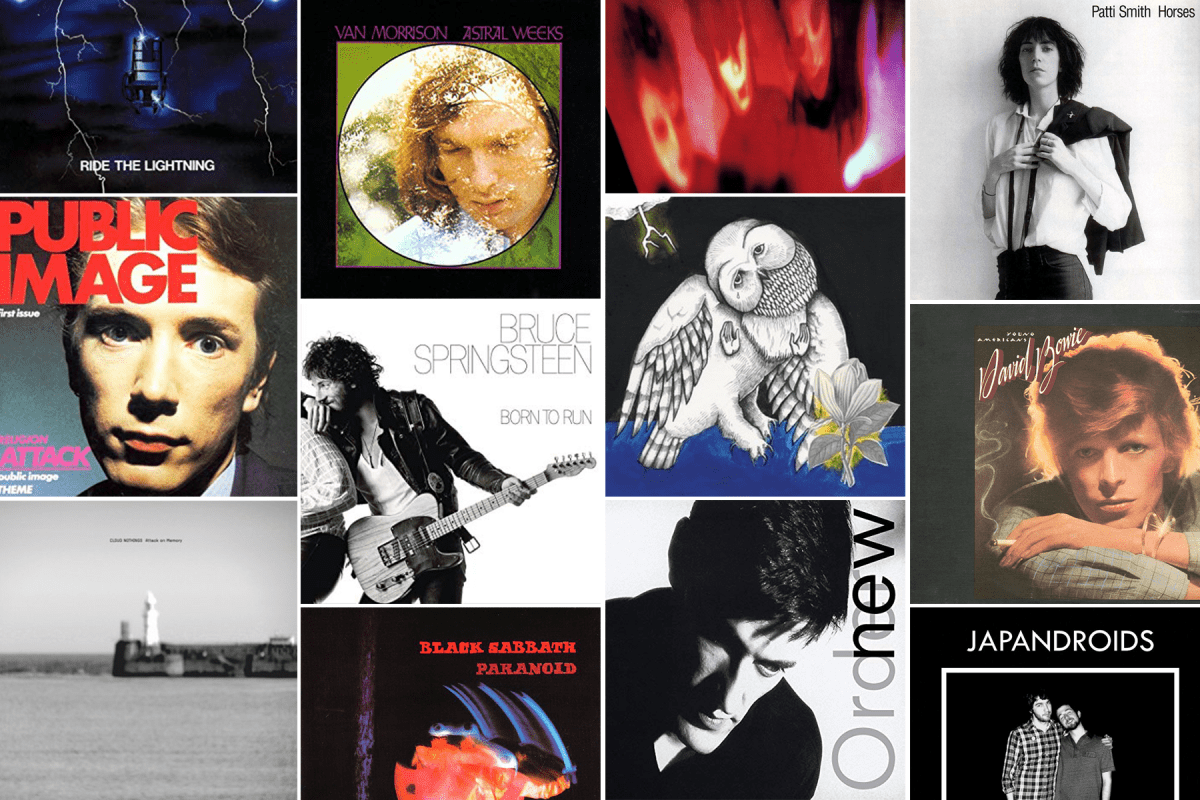We come here today to praise brevity, concision and getting to the point already. So in the spirit of this enterprise, let us dispense with any further preamble and get right to the point: in this age of streaming-service bloat and seemingly endless albums, artists need to remember that the platonic ideal for a release is eight songs.
In numerology and tarot card circles, eight is a number that represents balance, and that’s certainly true when it comes to album tracklists. Eight sits right in the middle of what a proper album should be. Once you get past eight songs, you’re gilding the lily. You’re risking filler, and inviting the audience to hit the skip button. This is obviously too risky of a proposition. Conversely, if there are less than eight songs, you’re not dealing with an album, you’re dealing with an EP, which is all well and good. Shout out to classic EPs everywhere, but especially the best EP of all time (in my humble opinion), R.E.M.’s Chronic Town. But that’s not what we’re discussing here. We’re talking about albums, and when it comes to albums, it takes eight songs to make an album and more than eight songs to make an album that is longer than it needs to be.
Perhaps, like most good-hearted people, you have every second of Television’s landmark debut of psychedelic punk freakouts Marquee Moon memorized, and you already knew that Tom Verlaine and company only needed eight songs to sear their opus into your brain forever.
Or perhaps you require more proof.
In the latter case, here are some other classic albums featuring eight songs and no wasted moments: Born to Run, Ride the Lightning, Raw Power, Astral Weeks, Remain in Light, Kick out the Jams, Trans-Europe Express, Young Americans, Come on Pilgrim. But it goes beyond Bowie, Iggy and the Stooges, The Boss and Van the Man. Led Zeppelin’s IV was eight songs. So was Paranoid by Black Sabbath and The Cure’s Pornography. Also on board: Public Image Ltd. (Public Image), New Order (Low Life), Sigur Rós, Al Green, Built to Spill, Talk Talk, Mogwai, The Fall, Japandroids … at some point or another, all have subscribed to the eight-song rule.
When artists embrace the eight-song mindset, it forces them to focus. If you only have eight songs to make a statement, those eight songs have to be as sharp as possible. You’ll have to edit yourself, which doesn’t come easy to some artists. Every song on the album will then have to be at least an 8 on a scale of 10. By embracing the eight-song limit, there’s no room for merely OK songs.

There are, obviously, plenty of classic albums featuring more than eight songs. I realize this. I am neither unreasonable nor trolling anyone. But when an album’s tracklist starts to get into the teens, even if it is a great album with mostly great songs, at some point it all starts to blur together. I’m a devoted fan of Grimes’ Art Angels and The National’s Trouble Will Find Me, but at 14 and 13 songs each, it does become too much of a good thing; I don’t think I could describe the last few songs on either album without relistening first.
When you limit yourself to eight songs, you greatly enhance your replayability appeal. Who among us didn’t have a period of time wherein Led Zeppelin’s IV didn’t leave the turntable, because every song is titanic and it’s so short that you can hit play again as soon as it’s over without feeling exhausted? When you make an album shorter, you give the people just enough but leave them wanting a bit more, tempting them to keep playing those same songs again and again, which in turn gives the album more real estate in the heart and mind. You make the listener love it more than a longer work and the attendant zoning out that comes with it; an album you can listen to all the way through every time is preferable to one you drift out of halfway through.
You probably noted that most of the examples from above are on the older side. This is because back in the ‘60s and ‘70s, the vinyl LP was the standard format for music, and a 33 rpm record could hold about 22 minutes per side. Unless an artist was going to make a double album (a costly and ostentatious endeavor back in the day, usually limited to the Beatles, the Stones and their ilk), this meant sticking to around 10 songs or so.
But the canniest editors of the time realized that less is more. And some of today’s sharpest young artists realize that the previous generation was on to something. There is perhaps no greater proponent of the power of restraint than Dylan Baldi, whose Ohio-based group Cloud Nothings has become one of our most reliable sources of shout-along, riff-blasting indie rock, proving their mastery across three lethally tight albums: 2012’s Attack on Memory, 2014’s Here and Nowhere Else and 2018’s Last Building Burning.
“I still think of albums as limited by the physical space of an LP, CD or cassette, which is definitely an antiquated way of looking at them at this point in time, but I think it helps immensely with trying to understand at what point you’ve finished making something,” Baldi tells InsideHook. “In 2019, an album can be a Spotify upload that you add a song to every day for the rest of time if you want, and that’s interesting enough, but I could never work that way. Dealing with the idea that an album could basically be infinitely long is insane to me. I really like limiting things to more physical formats and ideas. Eight songs is probably kind of a short CD, but it’s a great length for a single LP.”

Once CDs became the dominant form of music, tracklists started spiraling out of control, with 13-to-15 songs and hour-plus running lengths becoming the norm. While the ‘90s are now considered a golden time for music and an idyllic age before the internet ruined everything, there are very few canonical ‘90s albums that couldn’t stand to be trimmed by a song or two. Or perhaps I’m the only person who tends to skip “Head Down” when replaying Soundgarden’s Superunknown, or “Deeez Nuuuts” when revisiting Dr. Dre’s The Chronic. Endless sprawl marred many creative efforts back then. Metallica fans spent all of the Clinton years complaining that their former favorite band sucked, and when trying to wade through the punishingly overlong Load and Reload, it’s hard to begrudge their churlish attitude. But cut those 27 songs down to just the best eight, and you’d have an album as powerful as anything from their ‘80s prime.
As Dylan alluded to, the situation has gotten even more dire in the streaming age, as artists have realized that releasing absurdly overstuffed albums is an easy way to game the system and earn platinum certifications and impressive debut numbers, even if only the most devoted of hypebeasts have ever sat and listened all the way through the 27 songs of Drake’s Scorpion or the 106 minutes of Migos’ Culture II more than once. It’s no wonder Spotify is filled with fan-created playlists dedicated to cutting the pleasures of Culture II down to a more digestible length.
Having an infinite amount of space for an album can lead to an infinite amount of indulgences, and setting a strict ceiling can avoid a lot of problems. Take, for example, Arcade Fire’s 2017’s Everything Now, one of the most maligned albums by a major artist in years. It’s 13 songs long and filled with way too many cute gimmicks and ideas that were more clever in theory. But if you cut the “Infinite_Content”/“Infinite Content” trifle, excise the digital reggae mess of “Chemistry” and “Peter Pan” (the two worst Arcade Fire songs) and get rid of the “Everything Now” reprise at the end, you’d have a tighter album that lets neglected but powerful moments such “We Don’t Deserve Love” and “Good God Damn” shine, instead of burying them toward the end stretch of an album filled with patience-testing gimmicks.
But there’s reason to hope that the tide is turning.
While Drake is busy, as ever, doing too much, firebrand D.C. rapper Rico Nasty recently dropped the absolutely lethal eight-song album Anger Management, exhilarating contemporary rock bands like Cloud Nothings and Japandroids have demonstrated they know how to keep things to a tight eight, and in last year we’ve seen vibrant young rappers such as Vince Staples and Earl Sweatshirt releasing albums that, if not sticking to eight songs, at least showed that the artists knew when to get in and get out, with Staples FM! running 22 minutes and Earl’s Some Rap Songs running 24. And while most of Kanye West’s creative (and life) decisions last year seemed wayward and misguided, he was onto something with the idea of keeping his flurry of releases he produced (from his own negligible ye to the quite solid K.T.S.E. by Teyana Taylor) to seven songs each. And the best of the bunch, Pusha T’s Daytona, becomes eight songs if you decide to include the masterful diss “The Story of Adidon” as a bonus track, which we all do.
Between 2014’s Here and Nowhere Else and 2018’s Last Building Burning, Cloud Nothings also made the 2017 album Life Without Sound, which boasts an uncharacteristic nine songs. It’s a strong album, but in retrospect, Baldi thinks it’s just a bit too long. “I can rattle off the tracklist of the eight-song ones by memory but still have trouble remembering the order of the nine-song album. Let alone the first few we made that were like 10 or 11,” he says. “For me, it almost stems out of feeling like I exhaust a certain style of songwriting after about eight songs, and that adding any more would make an album too repetitive. Our records all have their own individual songwriting styles, but the ones that I feel are the strongest and most coherent statements are the eight-song ones. It’s a perfect amount of songs to make an impression and then get out of there without overstaying your welcome.”
He adds that “There is also something symmetrically pleasing about an album that has four songs on one side and four on the other,” he says. “But that probably has more to do with my own personal OCD.”

As a self-professed octologist (a term I made up that means “into the number eight”), I gave Baldi the list of eight-song classic albums and asked why, as a musician, he thinks artists have continually gravitated to that number. Beyond helping an artist to focus, he thinks that great artists realize there is a virtue to quitting while one is ahead.
“I’d probably say that those are the best albums by any of the given artists. I don’t necessarily know if them being eight songs exactly has anything to do with it, but I do feel like creativity comes in short bursts, even for great artists, and that maybe they managed to capture the best of their songwriting abilities in one very lucky little spurt,” he says. “That spurt just happened to be eight songs in a lot of very famous rock canon cases. And really, I could probably shave songs off of a lot of ‘classic’ albums and cut them down to right around eight songs and probably enjoy them more. There really don’t need to be that many double albums in the world.”
So in a world where more seems to me more and more, let me put this plea out there to artists: Do less, edit yourself and above all, remember that eight is enough. And in case you need more proof, here is our running list of albums that only needed eight songs to become classics …
Patti Smith – Horses
Led Zeppelin – IV
Metallica – Ride the Lightning
Bruce Springsteen – Born To Run
Japandroids – Celebration Rock
Talking Heads – Remain In Light
Iggy and The Stooges – Raw Power
Black Sabbath – Paranoid
Sigur Rós – ()
David Bowie- Young Americans
Van Morrison – Astral Weeks
The Cure – Pornography
Richard and Linda Thompson – Shoot Out the Lights
MC5 – Kick Out The Jams
Dead Can Dance – Within the Realm of a Dying Sun
Cloud Nothings – Attack on Memory
Kraftwerk – Trans Europa Express
Iggy Pop – The Idiot
Al Green – The Belle Album
Public Image Ltd. – Public Image
Mogwai – Rock Action
New Order – Low Life
Talk Talk – Colour Of Spring
Built to Spill – Perfect From Now On
Pixies – Come On Pilgrim
Songs: Ohia – The Magnolia Electric Co.
The Fall – Perverted by Language
This article was featured in the InsideHook newsletter. Sign up now.
























